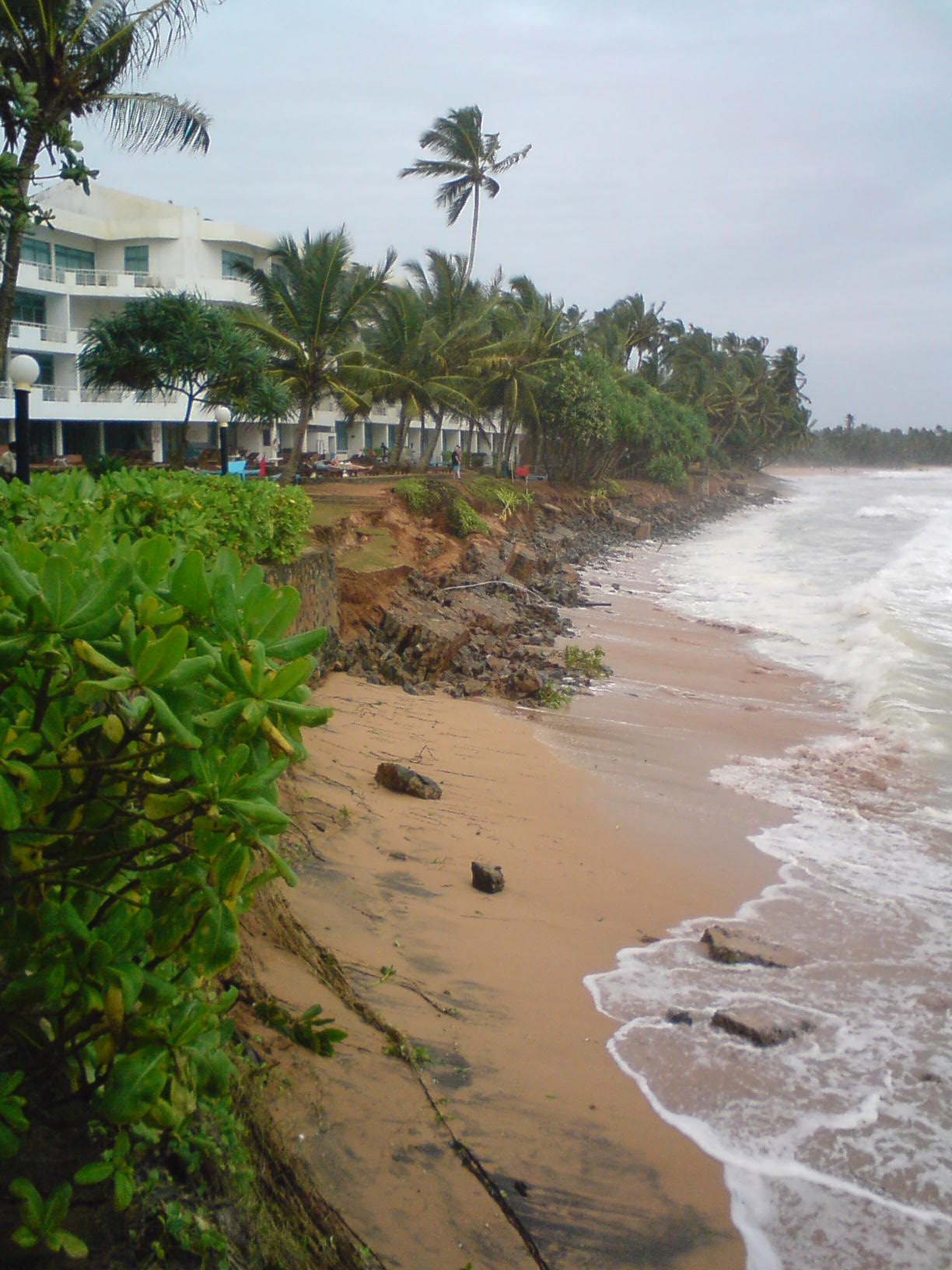Coastal Erosion

Sri Lanka’s experience with coastal erosion dates back to 1920. Today coastal erosion is an acute problem, disrupting fishing navigation" recreation and many other coast-based activities.
The major source of beach sand in Sri tanka is sediment carried down by the rivers. Other sources are sediments from eroding coastal features, and offshore sands brought onshore. If the sand supplied to a particular coastal sector is less than what is carried away, the shoreline will erode.
A variety of human activities contribute to the problem, namely, sand mining from river beds and beaches, coral mining and destruction of reefs, improper location or construction of maritime structures (for example, shoreline protection works, fishery harbours, river outfall training schemes,vertical or steeply-faced seawalls in close proximity to the beach), and improper removal of coastal vegetation.
It has become more serious because mangroves are being eradicated by encroachment (human settlement), fuelwood cutting and the clearing of coastal areas for intensive shrimp culture. Mangrove forest cover was estimated to be approximately 12 000 hectares in 1986; this dwindled to 8 687 hectares in 1993 and was estimated to be only 6 000 hectares in 2000. Approximately US$30 million has already been spent on breakwaters and other construction to combat coastal erosion on southern and western coasts ; however, coastal erosion still persists in some coastal areas.
Although the beaches are receding in most parts of the island the impact of coastal erosion is most severe along the western and southwestern coasts. While there are isolated problems elsewhere, it is only along this segment that the problem is widespread. This is also the most densely populated coastal region and development along it is most intense. About 75 pr cent of the bigger hotels in Sri Lanka are located in coastal areas, very near the waterline. Coast protection schemes have been implemented to protect the most vulnerable hotels. However, several smaller structures such as restaurants and swimning pools have been damaged or destroyed. Several hotels have experienced decreased clientele because of non-availability of beach in the hotel frontage.
Both the highway and railway lines of Sri lanka rue on or near the coast. The main railway link between Colombo and Matara runs near the coast along most of its length. In the area between Colombo and Panadura it runs very close to the beach, and most of it exists today only due to heavy coast protection works that have been carried out during the past several years to protect the railway line. Similarly, the main highway linking Colombo to the major southern towns, runs in close proximity to the beach in most areas.
Coast protection schemes have been implemented in many critical areas to provide protection to the road. It has been estimated that along the coastal segment extending 6 85k m from Kalpitiya to Yala National Park, about 175,000to 285,000s q m of coastal land is lost annually through erosion. Of this amount, a bout 145m sq m are lost annually from the mouth of the Kelani River to Talawila (Kalpitiya peninsule).
Related Content
- Reply filed by the state of Odisha regarding increasing instances of high energy swell waves, May 1, 2025
- Action taken report by the District Magistrate and Collector, South 24 Parganas on steps taken to prevent coastal erosion, Sagar Island, West Bengal, 22/02/2025
- Liberia country and climate development report
- From climate risk to resilience: unpacking the economic impacts of climate change in Kenya
- Joint committee report on the impact of sea level rise on the islands and frame policy and measures to protect these islands, 10/10/2023
- Status report filed by the Additional Chief Secretary on steps taken to protect the river bank ecosystem of Bharathapuzha, Kerala, 16/02/2023
